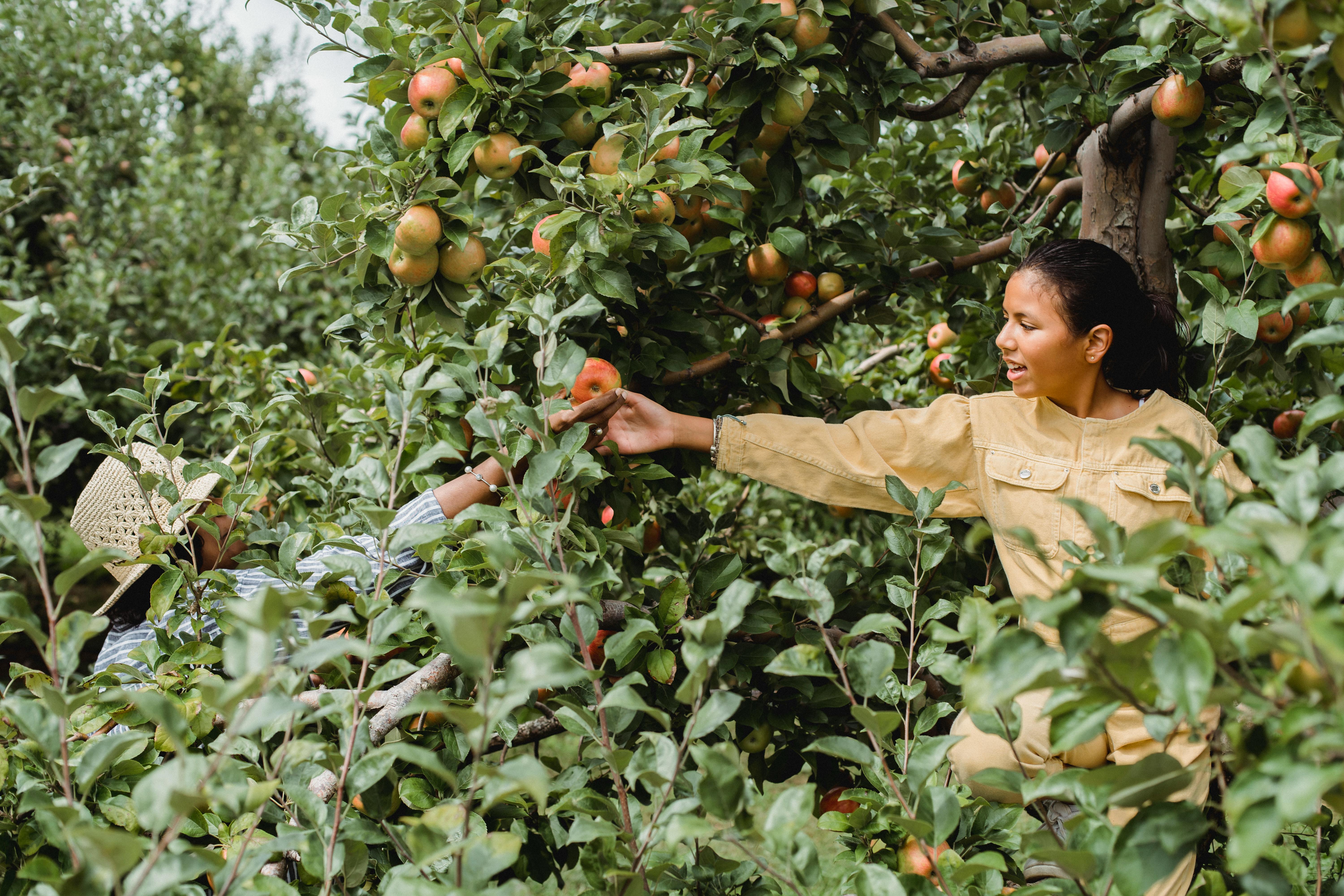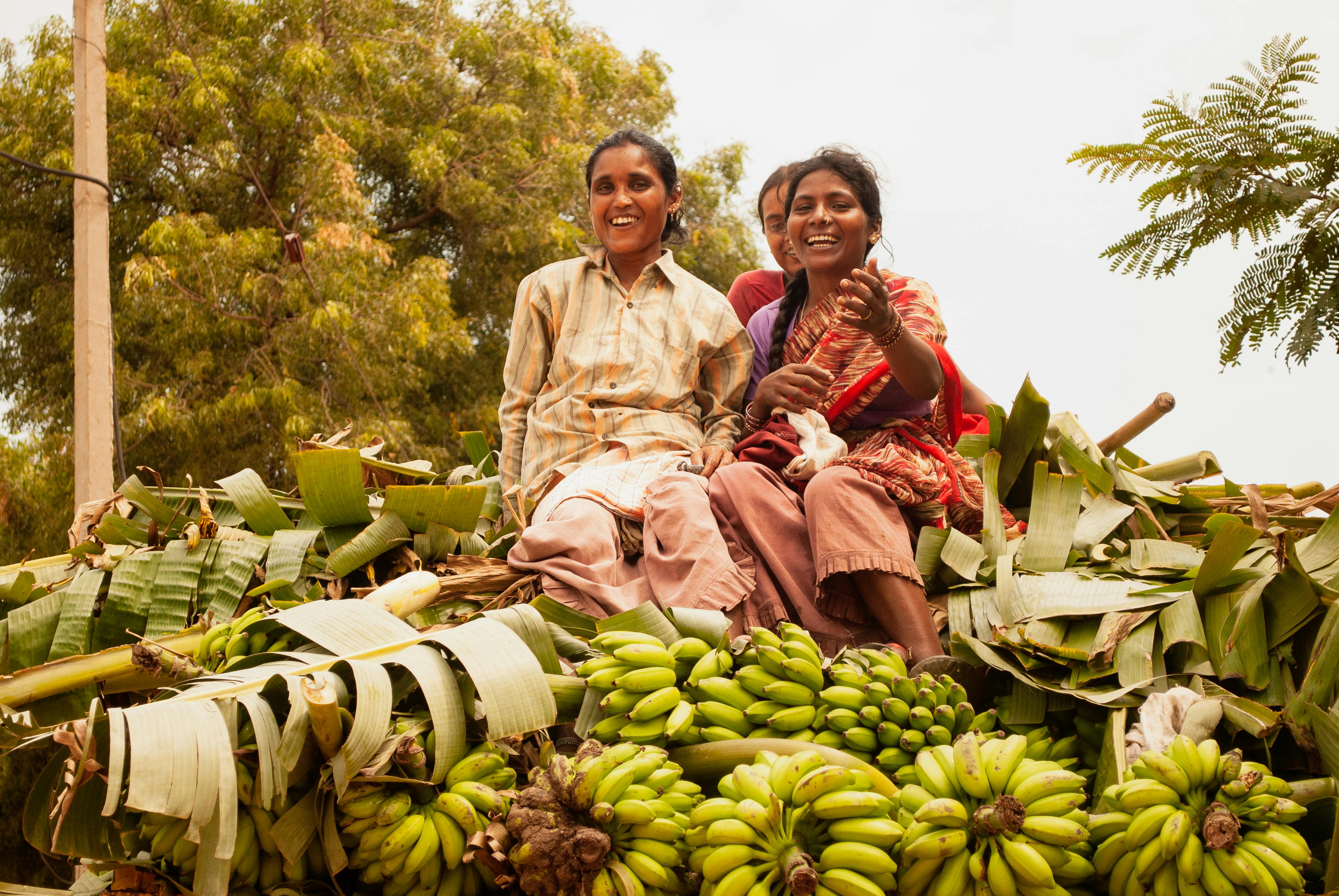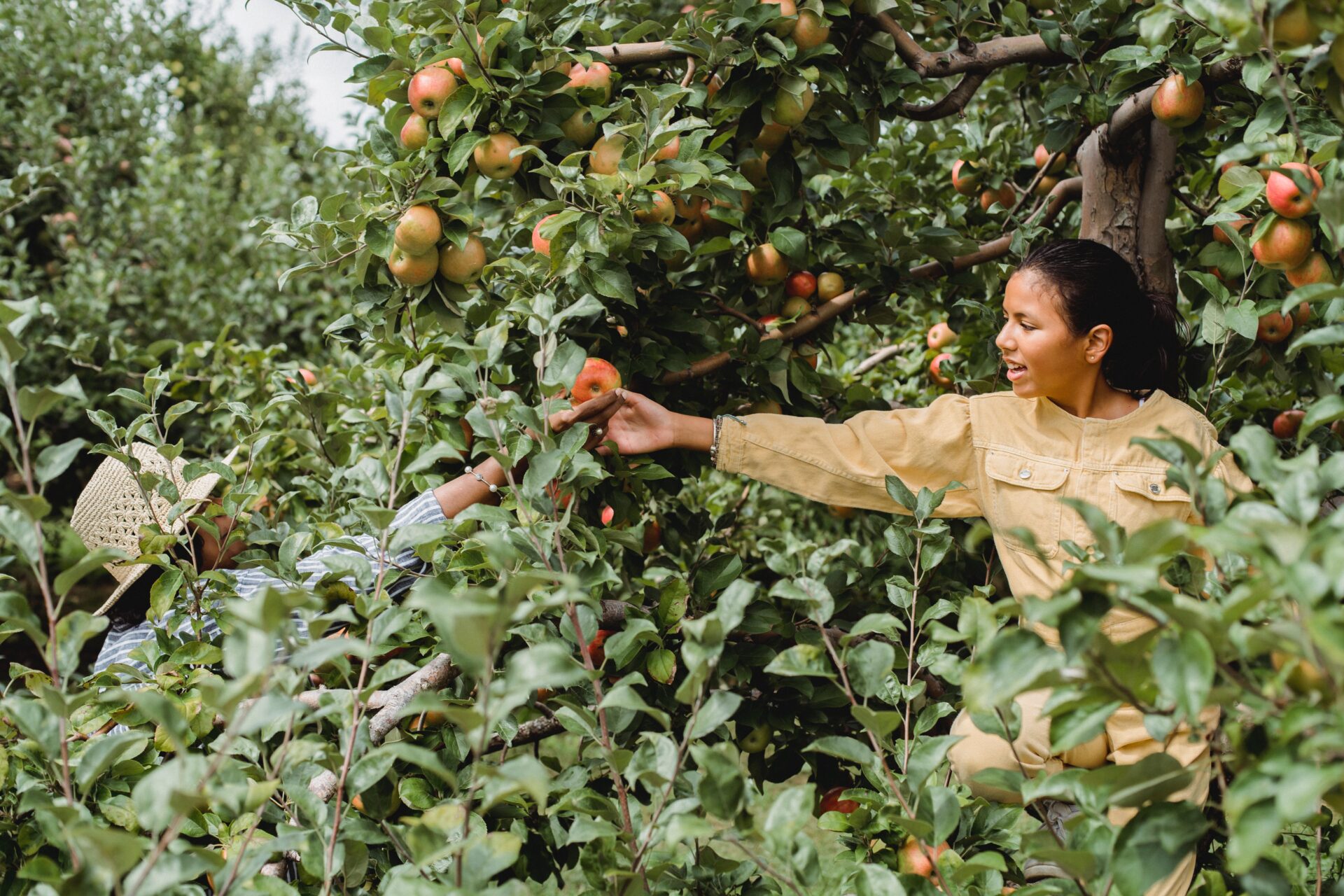Virginia is known for its diverse landscape, with many different kinds of trees that can thrive in the area. One of the great things about living in Virginia is that it’s possible to grow a wide variety of fruit trees in the state. From apples to cherries and pears, there are a number of different types of fruit trees that can be grown in Virginia. With the right care and attention, these fruit trees can produce delicious fruits for years to come. In this article, we will explore some of the best fruit trees that can be grown in Virginia.The types of fruit trees that grow in Virginia include apples, peaches, pears, plums, cherries, figs, and apricots. Other varieties, such as mulberries, persimmons, and pawpaws also grow in the state.
Planting Apple Trees in Virginia
Apple trees are a popular choice for backyard gardens in Virginia, as they provide a beautiful landscape and delicious fruit. It is important to consider the variety of apple tree that is best for your particular climate and soil type. There are many factors that need to be taken into consideration when planting an apple tree in Virginia, including the type of rootstock, the size of the tree, and the climate zone.
When selecting an apple tree for your garden, it is important to choose a variety that is suitable for your growing zone. Most apple trees in Virginia will do well in USDA hardiness zones 5-7. Other factors such as soil fertility and moisture levels should also be taken into account when selecting an apple tree variety.
The size of the apple tree should also be considered when planting. Dwarf trees are ideal for small yards or patios, while semi-dwarf varieties can be used in larger spaces. It is important to select a rootstock that is suited for your growing conditions; this will help ensure optimal growth and productivity from your apple trees.
Aside from selecting the right variety of apple tree for your area, there are other things you can do to ensure success with growing apples in Virginia. Planting at the right time of year is important; this will depend on your USDA hardiness zone and should be done during late winter or early spring. Proper pruning and fertilization techniques must also be followed to ensure healthy growth and productivity from your trees.
With some careful planning and attention, you can successfully grow delicious apples in Virginia! Selecting the right variety of apple tree, planting it at the right time of year, and taking proper care of it are all key components to success with growing apples in Virginia.
Growing Peach Trees in Virginia
Virginia is known for its mild climate and rich soil, which makes it a great place to grow a variety of fruits and vegetables. Peaches are among the most popular fruits grown in the state, and they can be grown in home gardens with some simple steps. If you’re looking to add some delicious peaches to your summer meals, here’s what you need to know about growing peach trees in Virginia.
The first step when growing peach trees is to choose the right variety for your garden. There are many different types of peaches available, so it’s important to do some research and find one that will thrive in your area. Some of the more popular varieties include Elberta, Redhaven, and Harvester. You should also consider whether you want a standard or dwarf tree; a standard tree will be larger and produce more fruit, but a dwarf tree will take up less space and require less maintenance.
Once you’ve chosen the right type of peach tree for your garden, it’s time to plant it! It’s best to plant your tree in early spring when the soil is still cool and moist. Choose an area that gets full sun throughout the day and has good drainage. Dig a hole that is twice as wide as the root ball of your tree and mix in some compost or other organic matter to help with drainage. Place the tree into the hole so that it is level with the surrounding soil and backfill with more compost or organic matter. Water thoroughly after planting to help settle the soil around the roots.
Peach trees need regular care throughout their growing season. It’s important to water them regularly during dry periods and mulch around them to help retain moisture in the soil. Prune them regularly as well; pruning helps encourage new growth, which will result in more fruit production later on. Fertilize your peach trees once per year with an all-purpose fertilizer containing nitrogen, phosphorus, potassium, calcium, magnesium, iron, zinc, manganese and copper for optimal growth and health.
With proper care and maintenance, you can enjoy fresh peaches from your own backyard every summer! Growing peach trees in Virginia can be rewarding experience that yields delicious rewards all season long!
Growing Pear Trees in Virginia
Pear trees are a popular choice among fruit trees for the home orchard in Virginia. Pears are easy to grow and maintain, with many varieties available that thrive in the state’s climate. From the classic Bartlett to the more exotic Asian varieties, there’s something for everyone to enjoy.
The best time to plant pear trees depends on the variety, but generally speaking it is best to plant in late winter or early spring. When planting, make sure you choose a location with well-drained soil and plenty of sun exposure. Most pear trees need at least 6 hours of sun per day. It is also important to space your trees correctly so they can get adequate air circulation and sunlight.
Once planted, water your pear trees regularly and provide supplemental fertilizer if needed. Pruning is also necessary for healthy growth; it helps promote strong growth and allows more sunlight into fruit-bearing branches. It’s best to prune in late winter or early spring when the tree is still dormant.
When it comes time for harvest, pears should be picked when they are slightly firm but still ripe; this will ensure optimal flavor and texture. If you plan on storing your pears, pick them slightly unripe so they can ripen later at room temperature or in the refrigerator.
With proper care and maintenance, pear trees can provide an abundance of delicious fruit for years to come! Whether you’re looking for a classic variety or something more exotic, growing pear trees in Virginia is sure to be a rewarding experience.
Growing Plum Trees in Virginia
Plum trees are a great addition to any garden in Virginia, as they are highly productive and can provide an abundance of delicious fruit. They are also relatively easy to grow and maintain, making them a great choice for novice gardeners. There are a few things to consider when growing plum trees in Virginia, such as the climate and soil conditions. The climate should be warm enough for the fruit to ripen, but not too hot that it will cause the fruit to become overly ripe quickly. The soil should also be well-draining, as plums thrive in moist soil but can suffer from root rot if it is too wet. Additionally, plums require full sun for at least 6 hours per day in order to produce an abundant crop of fruit. With these conditions in mind, there are several different types of plum trees that can be grown in Virginia.
One of the most popular varieties is the European plum tree, which produces tart-tasting fruits that are ideal for canning or making preserves. Another popular variety is the Japanese plum tree, which produces larger, sweeter fruits that are perfect for eating fresh or baking into pies and other desserts. There are also several hybrid varieties available that combine traits from both European and Japanese plums. All of these varieties require some pruning throughout the year in order to keep them healthy and productive. This includes removing dead or diseased branches as well as thinning out overcrowded branches so that each individual piece of fruit can get plenty of sun exposure during ripening season.
Overall, growing plum trees in Virginia is an excellent way to enjoy a bountiful harvest of delicious fruit each year with minimal effort required on the part of the gardener. With some basic knowledge of climate and soil requirements plus regular pruning throughout the season, anyone can have success with these beautiful and productive trees!

Cherry Trees in Virginia
Virginia is known for its breathtaking views, stunning landscapes, and lush forests. It is also home to some of the most beautiful cherry trees in the country. The state has a long history of growing and cultivating these beautiful trees, dating back to colonial times when the first settlers brought them from Europe. Today, there are several varieties of cherry trees that can be found in Virginia, including the popular Yoshino Cherry Tree and the Brandywine Cherry Tree. Each variety has its own unique characteristics and blooms at different times throughout the year.
In addition to providing a stunning sight as they bloom in early spring, cherry trees are also a great source of food for birds and other animals. The flowers of these trees attract bees for pollination and provide bountiful harvests of cherries for people to enjoy. Cherry trees are also beneficial for their ability to reduce soil erosion and provide shade for homes in summer months.
Cherry tree owners should keep an eye out for pests like Japanese beetles or scale insects that may be attracted to these plants. To protect the health of your cherry tree it is important to prune it regularly and make sure it has adequate water. With regular care, a cherry tree can last many years and bring joy to its owner with each passing season.
The Virginia Department of Forestry offers many resources on how to properly care for your cherry tree, including information on planting locations, watering schedules, pruning methods, fertilizing options, pest control strategies, and more. Whether you’re looking for a single specimen or an orchard full of cherries, Virginia’s diverse selection of cherry trees is sure to please. So come explore this part of our state’s natural beauty by taking a stroll through one of Virginia’s many parks or gardens featuring these gorgeous flowering trees!
Growing Apricot Trees in Virginia
Apricot trees are a beautiful addition to any Virginia garden. They require minimal maintenance and can thrive in a variety of climates. Apricots are an easy-to-grow fruit tree that can produce delicious fruit for years to come. With the right care and attention, you can successfully grow apricot trees in Virginia.
When selecting an apricot tree to plant, make sure you select one that is suited for the climate of Virginia. Most apricot trees prefer full sun and well-drained soil, so look for a variety that will thrive in these conditions. You may also want to consider selecting a variety that is resistant to certain diseases and pests common in Virginia, such as peach borers or aphids.
Once you have selected your apricot tree, it is important to properly prepare the soil before planting. Loosen up the soil at least 12 inches deep with a garden fork or tiller and mix in plenty of compost or other organic matter to help retain moisture and nutrients. Also make sure your planting site has good drainage – if it doesn’t, it’s best to find another location or build raised beds.
When planting your apricot tree, be sure to dig a hole that is twice as wide as the root ball and just deep enough so that the tree’s crown (where the roots meet the stems) will sit slightly above ground level after backfilling with soil. Water the area thoroughly after planting to help settle any air pockets around the roots.
Apricot trees need consistent moisture during their first year of growth, so make sure you water them regularly during this time. Aim for about 1 inch of water per week throughout their established growing season (May through September). If drought persists during this time, increase watering accordingly.
Finally, pruning is important for keeping your apricot trees healthy and productive over time. Prune out any dead or diseased branches as soon as you spot them and thin out excess branches during late winter or early spring each year before new growth begins. With proper care and attention, you can enjoy fresh apricots from your own backyard for many years!
Growing Nectarine Trees in Virginia
Nectarines are a delicious and nutritious summer fruit. They are closely related to peaches, and can be grown in Virginia. Growing nectarine trees in Virginia has its advantages and disadvantages. On the plus side, nectarines thrive in the climate of the region, with hot summers and mild winters. In addition, they require little maintenance once established and can produce fruit for many years.
On the downside, growing nectarine trees may require more effort than some other types of fruit trees. Because they are prone to diseases such as brown rot and peach leaf curl, it is important to choose disease-resistant varieties for your Virginia orchard. Pruning is also important for keeping nectarine trees healthy and productive. The best time for pruning is late winter or early spring before new growth begins.
Finally, it is important to choose a location with good drainage for your nectarine tree. Nectarines need well-drained soil to prevent root rot and other problems. A sunny spot with at least six hours of direct sunlight per day is ideal for growing nectarines in Virginia. With proper care and attention, you can enjoy a bountiful harvest of juicy nectarines every year!

Conclusion
Fruit trees can provide a great addition to any Virginia landscape. They are not only aesthetically pleasing, but also provide a source of delicious and nutritious fruit. With proper care and maintenance, many types of fruit trees can thrive in Virginia’s climate. While some species, such as the persimmon tree, are native to Virginia, other species, such as apple and peach trees, can be successfully grown in the state with careful selection of variety. Whether you choose to grow a native or non-native species of tree, there is sure to be a variety that will fit your needs and preferences.
For those who want to add a fruit tree to their yard or garden in Virginia, it is important to consider the variety that best fits the environment and location. Researching the needs of each type of tree can help ensure proper growth and success when planting fruit trees in Virginia. With proper consideration and care for your chosen variety of fruit tree, you will be able to enjoy its beauty for years to come.



